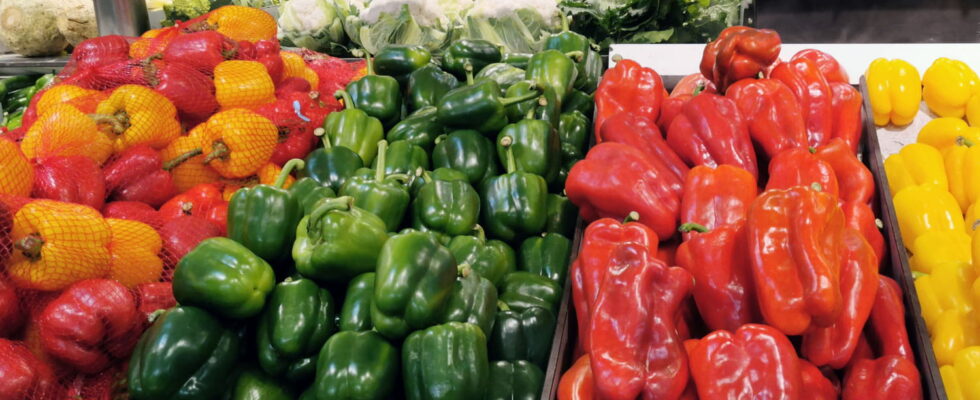It’s not just a question of aesthetics, the color of peppers can have a real role in your cooking.
It’s the start of the season for peppers, one of the most popular vegetables. Good news, choosing one or the other generally does not change the price, most often the same between yellow, red and green peppers, which allows you to prepare visually attractive and colorful dishes. Who has never fallen in love with a Tex-Mex plate of colorful fajitas smelling of spices? Although red, yellow and green peppers differ slightly in terms of taste, one of them still has a definite advantage that makes it the favorite of many foodies.
Let’s first remember that all peppers are initially green… when they have not yet reached maturity. Depending on the variety, they then take on a yellow, red, orange hue or remain green! The red pepper, the most popular and widespread, has a small advantage: a visibly sweeter taste. And this is not just an impression or a myth.
Studies have actually shown that its sugar content can reach 6.4 grams per 100 grams of peppers. On the other hand, green peppers are often considered more bitter by many consumers. This perception is well-founded, its sugar concentration being half as much. Depending on the recipes, you can alternate between these two varieties in order to modulate the flavor and taste of your dishes.

Chefs have understood this issue well. Softer and sweeter, red pepper is frequently used to make condiments, sauces, coulis or accompaniments intended to enhance meat or fish. It’s the chefs’ little secret to enhancing a gourmet dish. But that’s not all ! Red pepper has another advantage, its vitamin C content being higher. If the pepper is full of it, it is the red which wins with 140 milligrams of vitamin C compared to 115 for the green pepper, already well equipped in this matter.
Do you prefer the taste of green pepper? Please note that it is optimal for making stuffed vegetables, its firmer flesh resisting cooking at high temperatures better. This is also why chefs like to use it in their ratatouilles, vegetable tians or gratins. Finally, the yellow pepper will be ideal in salad, simply drizzled with a drizzle of olive oil.
One last surprising piece of information to include during your next coffee break or family meal: never call peppers a vegetable! Belonging to the nightshade family, just like chili pepper, it is actually categorized as… a fruit.
